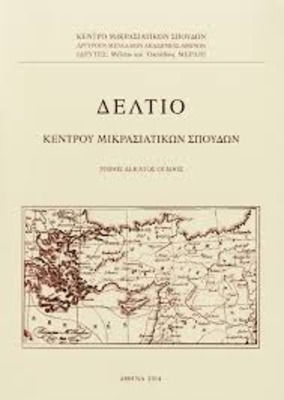Στοιχεία για τον εκχριστιανισμό του Πόντου
Part of : Δελτίο Κέντρου Μικρασιατικών Σπουδών ; Vol.5, 1984, pages 45-69
Issue:
Pages:
45-69
Parallel Title:
The christianization of Pontos
Section Title:
Articles
Abstract:
By the opening of the fourth century, it is commonly assumed, Christianitymay have numbered nearly one half of the population of Asia Minor.In some areas, including Bithynia and Pontos, there were districts,both urban and rural, which appear to have been practically Christian.Many scholars have seen in the choice of Constantinople as the new capitalof the Roman empire the significance of the widespread influence ofChristianity. However, in spite of the well established conviction thatAsia Minor and Thrace were Christianized already from an early period,there is precious little information concerning the process and the type ofconversion. Phrygia and other large provinces of Asia Minor, as it isknown from the account gived by the fourth century church historianEusebius, were influenced by the prophetic heresy of Montanism ratherthan by orthodox Christianity. Bithynia and Pontos, on the other hand,are hardly even mentioned by Eusebius.A detailed investigation of the extant pagan and Christian sources,undertaken in the present article, reveals that though the conviction of anearly and wide conversion of Pontos has good foundation, there is almostnothing to suggest that the prevailing doctrines in the district were inaccordance with those of the orthodox parties favoured by Constantine.In fact, after the conversion of the empire, much of Asia Minor and inparticular its Northeastern regions which were vital to the religious policyof the new capital, had to be re-Christianized, i.e. brought into conformity with the prevailing parties of the major centers of Christianity in Rome and Alexandria.




